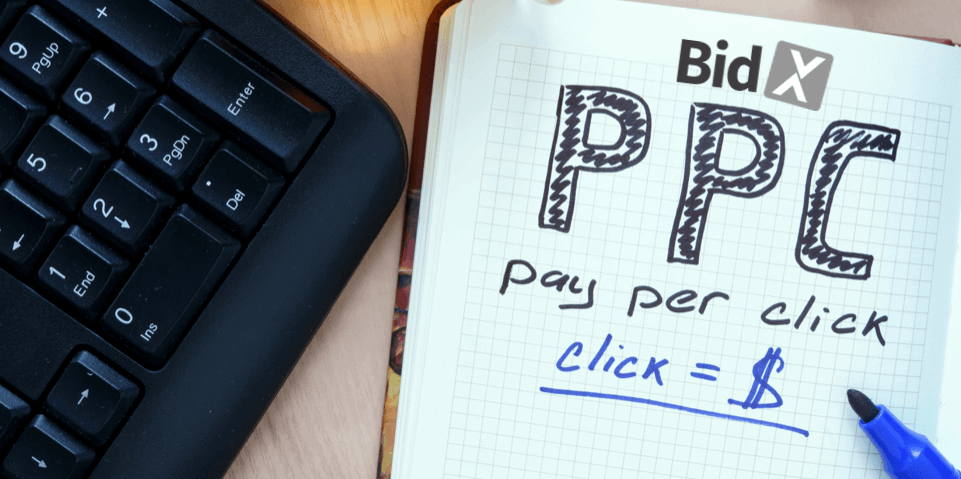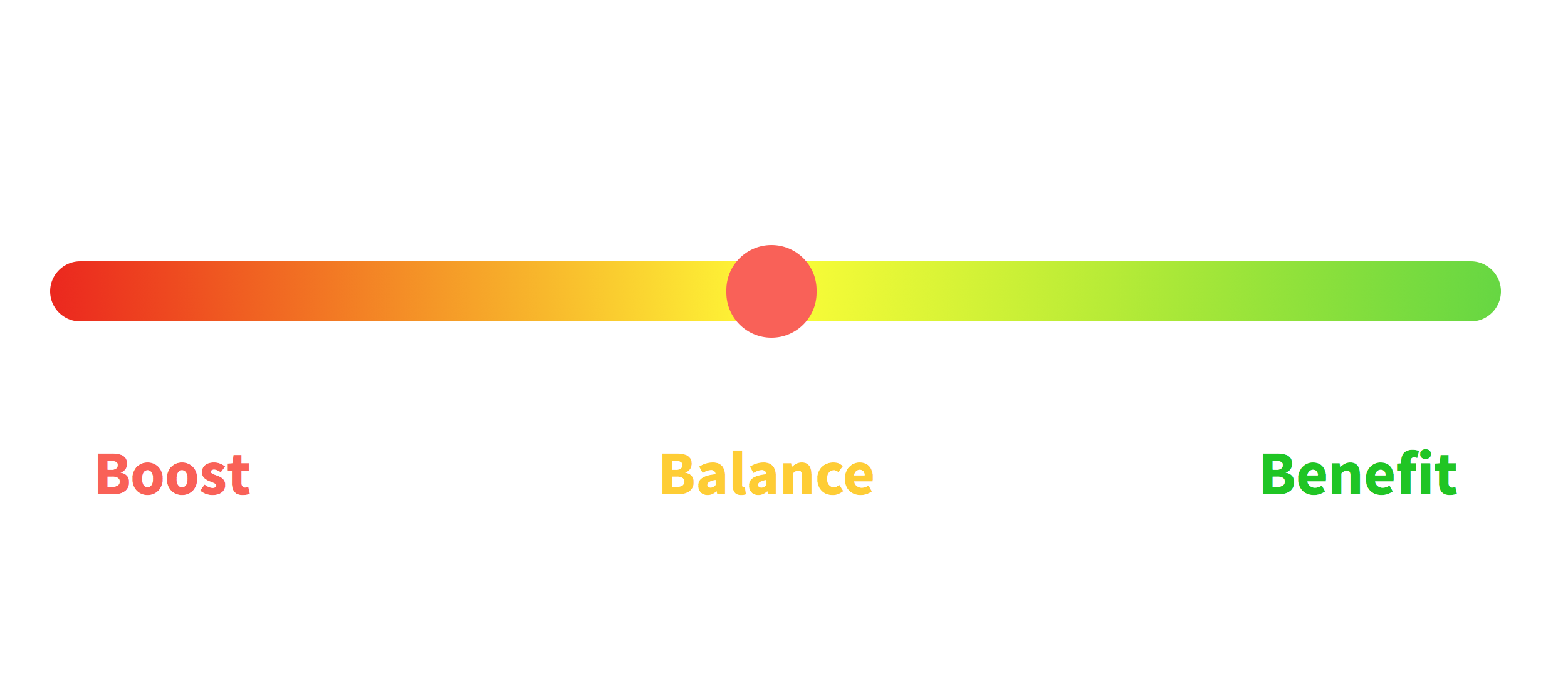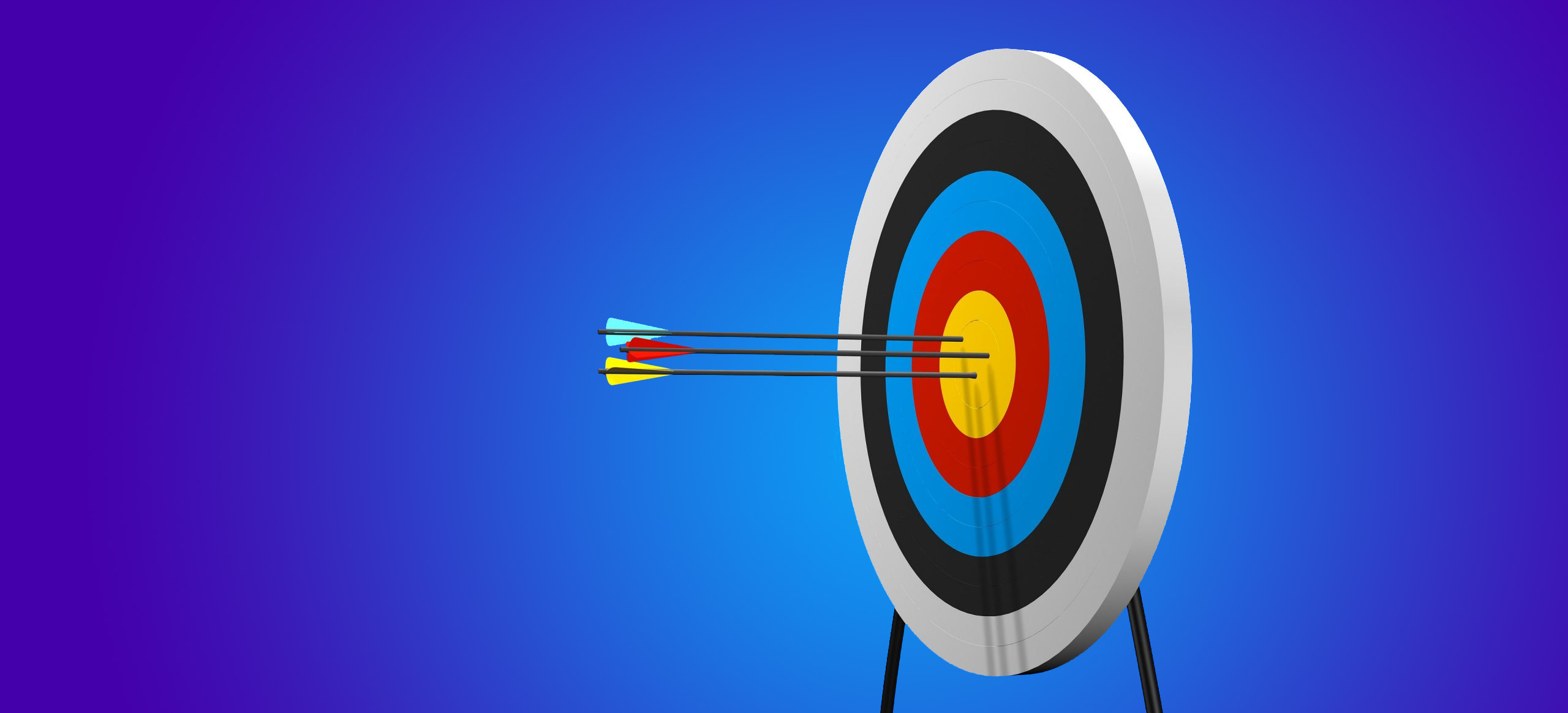Amazon PPC: What is the value of an additional unit sold through advertising?
In this article we break down the profitability of advertising campaigns by looking at the topic from a controlling perspective. Before you start advertising campaigns, you should have optimized your product detail page and decided on a Structure. The correct Structure for the set-up must also be observed. The topic is a bit more extensive, so this article is divided into the following three sections:
- The right setup: initial bidding and budgeting
- Controlling within the five optimization phases
- The value of an additional unit sold through advertising
The right setup: initial bidding and budgeting
A detailed keyword research should already be carried out for the creation of a listing, which later forms the basis for the advertising campaigns. If the filling of the campaigns with keywords is finished, the question arises how to set the starting bid of the keywords. This depends on various factors, such as the sales price, the conversion rate (CR) and the target ACoS.
When placing and later optimizing the bid, you should make sure that your maximum click price (CPC) is not exceeded. The max. CPC can be easily calculated with the following formula:
max. CPC = price x Target-ACoS x CR.
This becomes clear from an example: With a sales price of 30 EUR, a target ACoS of 20% and a CR of 10%, our max. CPC = 30 EUR x 20% x 10% = 0,60 EUR. Each purchase, which usually takes place after 10 clicks, may therefore not exceed 10 x 0,60$ = 6,-$ or rather 20% to my price.
Closing from max. CPC to max. bid
We have analysed several million bids and their CPC and developed a formula with which you can derive almost exactly the right bid from the maximum CPC.
Embed info graphic CPC vs. Bid
As it can be seen in the graphic, the bid is always higher than the CPC. We have developed a linearised model from this, in which the correlation is 87%, so that up to a bid of 3.50$ it is very likely that the right bid can be predicted for a desired CPC. The bid in our example above should not exceed 0.83$ in this case.
How do I place my starting bid?
We now know which bid we should not exceed, but is this also the right one to start? This depends on the strategy. With the calculated bid you will certainly achieve good results quickly. However, CR in particular is an approximation at the beginning, since organic CR differs from purchased CR on the one hand and may be different for each keyword on the other. The "Recommended Bids" from Amazon provide an indication of how individual starting bids can now be placed. We have investigated to what extent these bids are correct.
It turns out that the average bid is 0.28$ above Amazon's recommended bid. Please note that an exact keyword is much further away from the recommended bid than a broad keyword that is much closer to the recommended bid. 82% of keywords exceeding the critical CTR limit of 0.4% have a bid above the lower recommended limit. Over 58% of sales resulted from a bid above the recommended limit of Amazon.
It is recommended to set the start bid at least to the lower recommended limit to be display. Depending on the strategy pursued, the bid can also be placed directly on the bid recommended by Amazon or above the recommended upper limit. In the following weeks, the bids were to be gradually increased in order to increase CR on the one hand and to identify profitable keywords at an early stage on the other.
How do I set my daily campaign budget?
The campaign budget should not be too tight, otherwise Amazon will be limited in showing the ads and may focus on more profitable keywords for Amazon. In order to indicate a rough order of magnitude, the turnover currently generated with advertising can be considered. The budget now depends on the expected daily turnover and our Target ACoS. Example: If our product from the above example sells 20 times a day it generates a turnover of 20 x 30$ = 600$. If 20% of the turnover is to be generated via advertising, this corresponds to 4 units or a turnover of 120$. Based on our target ACoS of 20% we can determine that the expenses and thus the budget for the campaigns may not exceed 120$ x 20% = 24$.
Similar to the maximum CPC in relation to the bid, a surcharge of ~30% can be made here, so that with a structure of three campaigns (an AUTO, a BROAD and an EXACT campaign) 10$ each can be set as daily budget.
Controlling within the five optimization phases
In the analysis of several million keywords, a very efficient approach has emerged for optimization. The five phases therefore consist of the optimization after:
- Relevancy
- CTR
- CR
- ACoS
- Profit
Let's assume we have found relevant keywords for which initial sales have already been made. We are now in the 4th phase of optimization. With the sales, the ACoS of the display can now also be calculated. If the ACoS is below the percentage profit, the advertising campaigns carry themselves and achieve a small surplus. The ACoS in which the advertising costs correspond to the profit of a product sale is called Break-Even-ACoS. The calculation of the Break-Even-ACoS can be seen in the following graphic.
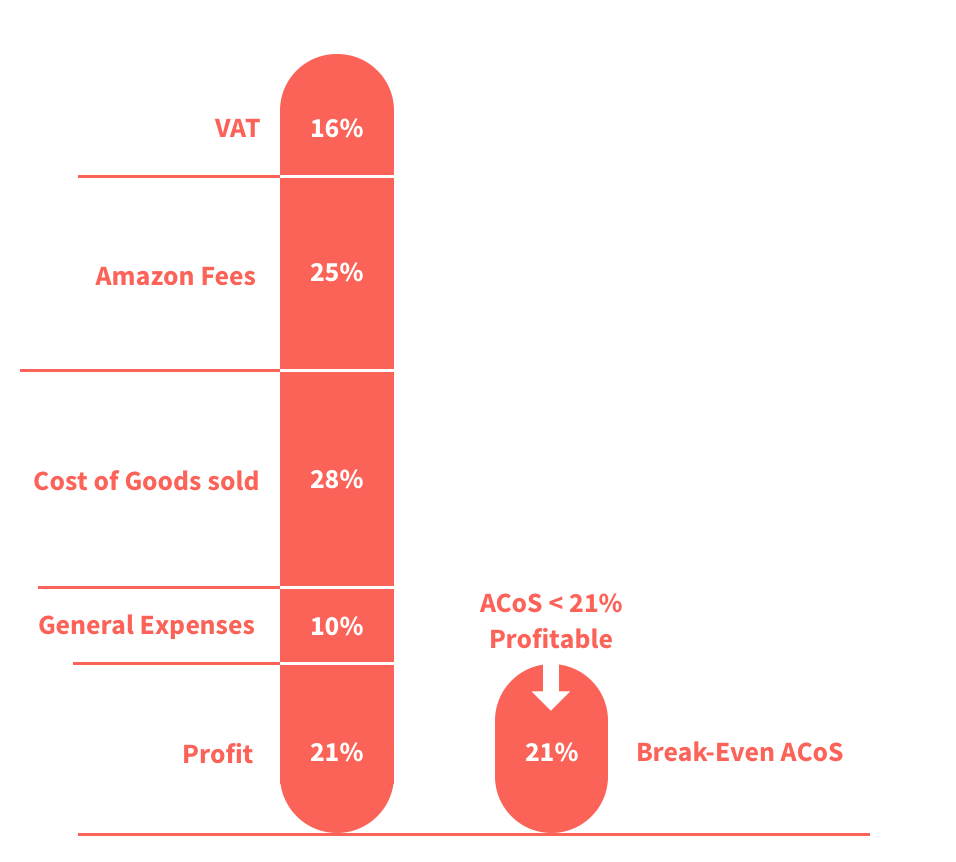
Amazon and the tax
It is important to note that Amazon calculates net costs with gross sales for sponsored products in Seller Central. This can be compared with margin and profit percentage. If the gross sales price is 30$ and our calculated target ACoS is 20%, the 20% ACoS in Amazon displayed at that moment corresponds to the profit percentage while the correct calculation with net sales price amounts to an ACoS of 23.8%, which in turn corresponds to the margin (profit / net sales price: 6$ / 25.20$ = 23.8%, assuming 19% German VAT).
For vendors in the Advertising Console Amazon shows VAT. In this case, ACoS is calculated from gross costs and gross sales. It has to be considered that our CPC can increase by 19% VAT and our budget is 7,14$. The ACoS displayed by the gross values is 16% lower.
When are my sales assigned to the ads?
When you look at the performance of your products, you must always keep in mind the so-called attribution window. Amazon needs 48 hours to validate the clicks. During this time, for example, fraudulent clicks are eliminated. Amazon assigns the sales visible in Seller Central to clicks for up to seven days or up to 14 days for ads in the Advertising Console. It is important to note that on the one hand approx. 87% of the sales are already assigned after three days and on the other hand the set cookie remains active for up to 30 days and can be viewed via the API. This has an influence on the time until an adjustment of bids on the one hand and on the other hand that e.g. during the Christmas season many customers click on an advertisement in November, but buy the article only in December and as a seller you do not receive the actual sales and ACoS for the keywords.
Optimization by profit
For this it is important to look at the overall picture. This includes revenues generated organically and through the use of advertising, subtracted by all costs including advertising costs. As a result, sometimes a higher ACoS can generate a higher overall profit, assuming the higher ACoS is below your Break-Even-ACoS. In addition, the value of an additional unit sold must be taken into account, which will be discussed in the next section.
The value of an additional unit sold through advertising: The magic PPC roundabout
If you push Amazon traffic or external traffic, this increases the number of detailed page views, which in turn leads to an increase in seller performance, which increases the number of organic ratings and organic rankings. An increase in the ranking in turn leads to an increase in sales, which leads to higher purchase volumes and thus to a reduction in product costs. This reduction can also be passed on to the consumer by reducing the price, thus increasing competitiveness and, moreover, sales.
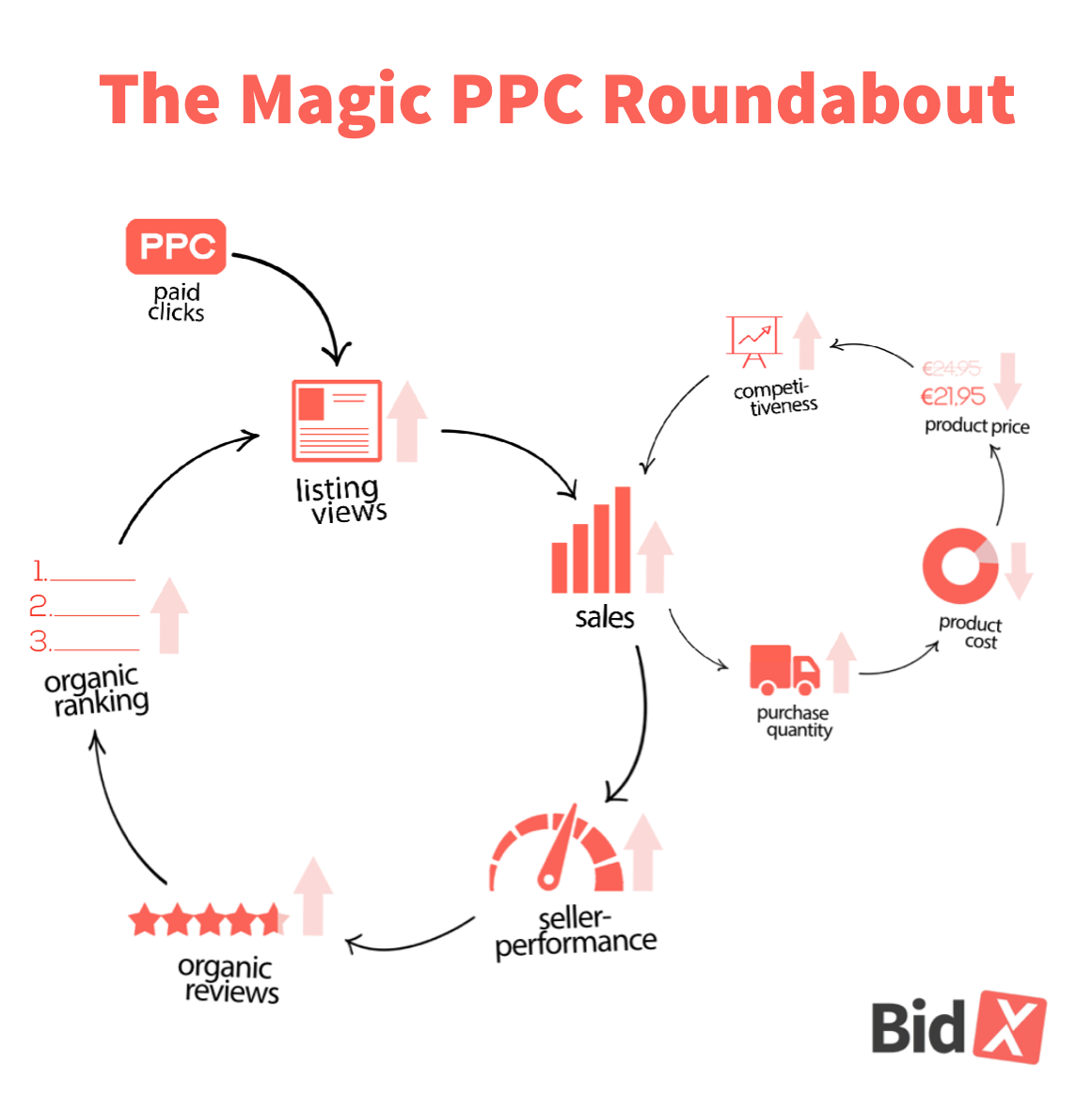
Additionally sold units increase your experience!
Furthermore, the Experience Curve Act states that
With each doubling of the cumulative sales volume of a product over time, there is a cost reduction potential of 20-30% (based on all inflation-adjusted unit cost included within the product's value).
The reasons for this are learning effects (e.g. efficiency increases through repetition of processes), technical progress and changes within the product (e.g. cheaper or fewer components).
Take a look at your reports regularly!
By now, Amazon has quite extensive possibilities to analyze the performance of your own campaigns, but also to view general relevant information. In addition to the standard reports, such as the order report, you can also use the Amazon Marketing Cloud (AMC), for a more comprehensive analysis of your measures.
Conclusion: PPC generally offers great added value
It turns out that advertising can have a decisive factor on overall sales performance. The search terms as well as their impressions and clicks have a particularly high value. This information represents a component block for continuous optimization and the associated sustainable success on Amazon.
How BidX can help you with your PPC Ads
BidX offers Amazon sellers an efficient SaaS solution to optimize their advertising. By automating bid adjustments, as well as keyword and negative keyword management, the merchant uses his advertising budget more efficiently, increases his profit and is considerably relieved of time. The success of the product and the founding team is based on many years of experience as a seller on Amazon, excellent IT knowledge and innovative machine learning technology.
